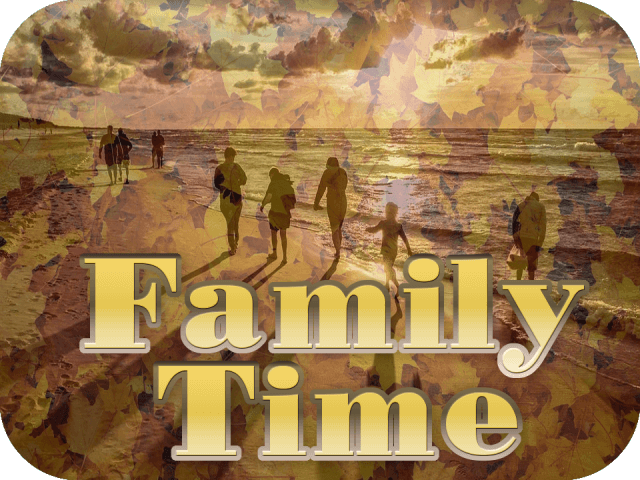Some links may be affiliate links. I may earn money if you buy something or take an action after clicking one of these links on this site.
Rob Knowlan is a participant in the Amazon Services LLC Associates Program, an affiliate advertising program designed to provide a means for sites to earn advertising fees by advertising and linking to Amazon.com. As an Amazon Associate, I earn from qualifying purchases.

Family Time
After a long week at work, it’s time to kick back and enjoy some time with the family.
👰🏽 Wedding Day 💍
But love’s a malady without a cure. ~John Dryden
My niece got married to her high school sweetheart yesterday. The ceremony was lovely and the reception was a hoot.
As usual, weddings remind me that my life has been so much better married than not.
I wouldn’t be the person I am today without Kelly beside me to help and uplift me even when I don’t deserve it.
She’s the best thing that’s ever happened to me and I’m glad she agreed to spend her life with me, forever & always.
I wouldn’t have it any other way.
📽️ Nerd Noir 🎞️
Marvel Werewolf By Night FULL Breakdown, Ending Explained, Blade and Moon Knight Easter Eggs
It’s October, a month primarily associated with Halloween. Typically, the streaming services begin promoting their scary stuff.
The MCU, not to be outdone, provided a one-shot that is themed around classic Universal monster movies.
The thing about comic books is that not all of them were about superheroes. Going all the way back to the Golden Age, comics also dealt with war stories, westerns, detectives and horror.
It’s fun to see them doing something a little different while still drawing on existing Marvel canon.
I’m not much of a horror guy, but I grew up watching monster movies with my parents on a Saturday.
October provides an annual hit of nostalgia by drumming up monster memories and thoughts of trick or treat.
🕵️ See The World 🗺️
Through a painting we can see the whole world. ~Hans Hofmann
Painting your prose allows readers to see your whole world as well. What you describe in your stories helps to point out what’s important.
That’s an important idea. Part of editing is the ruthless paring away of whatever is not important or necessary to the story.
If I say someone walks into a Barnes & Noble, a Starbucks or a Chick-fil-A, my primary audience has a pretty good idea what they look like inside. I would only need to describe them if they deviated from the norm or if there was some importance to how the atmosphere of the place affected the characters.
If I say someone is in their apartment, it doesn’t even slightly matter what color the walls are unless it does. You can use the decor to make a statement about the occupant’s personality or demeanor.
It could be a cozy space where the character unwinds after a long day. It could be a dingy, miserable, squalid space that emphasizes the character’s gloom and despair. It could be decorated in an unexpected or garish style.
On the other hand, it might not matter in the slightest. If it doesn’t, the word count can get trimmed.
Description for its own sake may be an attempt at prize-winning literary fiction, but it doesn’t facilitate plot unless it does.
If the details aren’t relevant, there’s no need to disclose them.
We definitely want to know about the details of Hogwarts, Camelot, Minas Tirith or the inside of a Djinn’s magic lamp, but we don’t particularly need to know the details of a college dorm, an office or a suburban home. We have a pretty basic notion of the latter and little to none of the former.
Also, something I was playing with in the first-person, present version of The Sentinels was that the viewpoint character’s own perspective would provide some characterization.
If a character was intimately familiar with the space they were in, they were unlikely to comment on details of it unless it pleased or displeased them in some way. Another character entering that same space for the first time would probably be inclined to describe the details that were of importance to them.
A burglar breaking into an apartment is unlikely to care what color the walls are, but would be drawn to details that might disclose the likely presence of valuables. If we wanted to depict that burglar as fussy and judgemental, more details about the quality of the decor would help to show that aspect of their personality. Otherwise, he’s pretty much just looking around for wall safes and jewelry boxes.
So, keep that in mind when you decide to go on a tangent about the details of a scene’s appearance.
If it helps the tone or characterization or if it needs to be explained because it’s a place with no common frame of reference, polish your prose and paint the scene.
If it’s a pet peeve of yours that people don’t spend enough time describing every stick of furniture and poster on the walls, maybe discuss it with your therapist. Not everybody is as into details as you.
Unless it matters to the story, it doesn’t. Cut the excess words and use what remains to move the plot forward.
That’s all for this lovely October weekend. I hope you’re enjoying some time off and digging the hygge vibes of 🍂Autumn🍂.